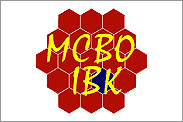Ongoing Research Projects
The role of Cav1.1 calcium channels in presynaptic differentiation during neuromuscular junction development
Funded by Austrian Science Fund (FWF) P33270
|
The neuromuscular junction (NMJ) is the synapse between motor neurons and skeletal muscle, and it represents one of the foremost models for the study of synaptogenesis. The development of the neuromuscular synapse requires a series of reciprocal interactions between the presynaptic motor neuron and postsynaptic muscles cells. Very recently we reported that calcium influx and release in skeletal muscle cooperatively regulate the organization and innervation of acetylcholine receptors (AChR) during NMJ formation (Kaplan et al., Cell Reports 23, 3891-3904, 2018). Unexpectedly, we further detected that in mouse mutants lacking the skeletal muscle calcium channel (CaV1.1) motor axons failed to stop and differentiate nerve terminals at postsynaptic AChR clusters. This observation suggests that CaV1.1 regulates the expression or distribution of factors involved in directing the motor nerve to prospective synaptic sites and the differentiation of functional nerve terminals. Therefore, we will apply several genetic calcium channel mouse models and double-mutants thereof, as well as a nerve-muscle co-culture system to examine the importance of the postsynaptic CaV1.1 channel in regulating the guidance and differentiation of the presynaptic motor nerve terminal. Moreover, we plan to elucidate the underlying signaling mechanism and to identify the muscle-derived retrograde signals regulated by CaV1.1. The expected results will elucidate an important trans-synaptic signaling mechanism involved in the coordinated development of pre- and postsynaptic structures of the NMJ, and it will assign a hitherto unnoticed function in synapse formation to the skeletal muscle calcium channel CaV1.1. Because the NMJ is central in the pathology of several detrimental neurological diseases, including Lampert Eaton syndrome, myasthenia gravis, and ALS, and trophic factors involved in the differentiation and stabilization of synapses represent therapeutic targets, unravelling the signaling pathway regulating such factors will advance our understanding of the disease mechanisms and possibly contribute to modern therapeutically strategies. |
The molecular mechanisms regulating voltage-sensitivity of CaV1 calcium channels
Funded by Austrian Science Fund (FWF) P30402
|
|
Voltage-gated calcium channels control numerous important body functions, including muscle contraction, hormone and neurotransmitter secretion, and activity-dependent regulation of genes. To do so these membrane proteins are capable of sensing voltage changes in the membranes of excitable cells and, in response, open a calcium-selective pore to allow influx of calcium that then activates the respective cell function. Interestingly, voltage-gated calcium channels have greatly distinct voltage-sensitivities fine-tuned to the demands of the specific cell function. Therefore, understanding the molecular mechanisms regulating voltage-sensing and gating of calcium channels is of great importance in the biomedical sciences. In this project we apply a combination of cutting-edge molecular and electrophysiological techniques, as well as novel computational approaches to unravel the molecular mechanism by which calcium channels determine their specific voltage sensitivities and adjust it to changing demands. The applied methods allow measuring the minute calcium currents passing through single channels, simulating the sequential interactions of individual amino acids during the voltage-sensing process at atomic resolution, and experimentally testing the function of these molecular interactions by genetically modifying individual amino acids in the channels. The results of this study are expected to significantly increase our mechanistic understanding of voltage-gated calcium channels; how they regulate their activation properties and why they differ so much between specific channel isoforms. This will contribute to the knowledge basis for future efforts to develop isoform-specific drugs targeting specific calcium channels involved in the etiology or pathophysiology of disease. |
The role of calcium channels in acetylcholine receptor pre-patterning during neuromuscular junction development
Funded by the Austrian Science Fund (FWF) P27031
|
|
The neuromuscular junction (NMJ) is the synapse between the motor neuron and muscle cells. Due to its experimental accessibility and the availability of unique molecular tools and animal models, the NMJ served as the prime model for research on synapse formation, and in particular to study the mechanisms that govern the accumulation of acetylcholine receptors (AChR) at the crests of the postsynaptic folds. Today it is generally accepted that both muscle-intrinsic and nerve-derived factors cooperate in the aggregation and stabilization of AChR in the postsynaptic membrane. Nevertheless the signaling mechanisms regulating these processes are still incompletely understood. AChR pre-patterning is the initial step in the formation of the NMJ by which muscle-autonomous mechanisms cause the aggregation of AChR clusters in the central zone of the muscle fiber and thus determine the territory accessible for innervation by the motor neuron. Recently an essential role of L-type calcium currents (LTCC) in this process was reported. Moreover, LTCC have been implicated in the signaling mechanisms regulating the subsequent stabilization of synaptic AChRs as well as the destabilization of extrasynaptic AChRs. Our laboratory recently discovered a high-conductance embryonic splice variant of the voltage-gated calcium channel (CaV1.1e), which likely is the source of the LTCC that regulate the aggregation and stabilization AChR. In this research project we take advantage of several available genetic mouse models for calcium channels to test the importance of CaV1.1e in NMJ formation and to elucidate the mechanisms by which calcium signals contribute to AChR aggregation and stabilization. |
Expression and function of the skeletal muscle calcium channel splice variant CaV1.1DE29.
Funded by the Austrian Science Fund (FWF) P23479
|
|
In skeletal muscle the voltage-gated calcium channel (CaV1.1) functions as voltage-sensor for excitation-contraction coupling. Its primary role is to activate calcium release from the sarcoplasmic reticulum, which in turn triggers contraction. However calcium influx through CaV1.1 activates slowly, with poor voltage-sensitivity, and is not essential for EC coupling in mature muscle fibers. Recently we isolated the transcript of a new CaV1.1 splice variant lacking exon 29 [Tuluc et al,. 2009]. Contrary to the current properties of the full-length channel, the CaV1.1DE29 isoform activates at 30 mV more negative potentials and conducts eightfold larger calcium currents. Whereas the CaV1.1DE29 channel isoform is expressed at low levels in adult muscle, it is the predominant splice variant in human and mouse cultured myotubes and in embryonic muscle. Therefore we hypothesize that CaV1.1DE29 represents the embryonic calcium channel isoform in skeletal muscle. Moreover, its biophysical properties and developmental expression patterns suggest that it may be responsible for excitation-coupled calcium entry (ECCE), a phenomenon implicated in the pathophysiology of malignant hyperthermia and central core disease. Therefore, we propose here to study the expression of CaV1.1DE29 in muscles at different developmental and physiological states, and to investigate its functions in normal and injured muscle. Studying these questions will be important for our understanding of skeletal muscle physiology and can be expected to reveal a fundamentally new role of the skeletal muscle calcium channel during development. |
L-type Ca2+ channel signaling complexes and epigenetic mechanisms induced by Ca2+ channel to nucleus signaling. Team 06 G. Obermair and B. Flucher
Special Research Area (SFB) F44: Cell Signaling in Chronic CNS Disorders (Speaker: Dr Jörg Striessnig).
Link: http://www.uibk.ac.at/pharmazie/pharmakologie/sfb-f44/
Funded by the Austrian Science Fund (FWF) F44.
|
|
In cultured CNS neurons we study the specific functions of distinct L-type calcium channel splice variants to better understand their potential role in the etiology of Parkinson's disease. These splice variants differ with respect to activation and inactivation properties and may thus differentially contribute to neuronal injury in Parkinson’s disease. Using established mRNA expression profiling we are characterizing the exact isoform composition of such channel complexes in relevant neurons. To study their specific functions we generated tagged channels to analyze the differential targeting properties of these splice variants in hippocampal neurons and the roles of their interaction with known scaffold proteins for dendritic stability and remodeling. Because our recent findings indicated that the calcium channel β4 subunit is targeted into the nucleus of quiescent neurons, we are investigating the role of β4 in gene regulation. We recently identified, that nuclear β4 proteins can regulate the expression of genes involved in neuronal activity and communication, thereby providing a novel feedback mechanism between synaptic calcium channels and the nucleus. |
Bernhard Flucher heads the FWF-funded PhD program Molecular Cellular Biology & Oncology (MCBO)
|
|
Link: http://www.mcbo.at/pages.php Funded by the Austrian Science Fund (FWF) W1101 MCBO’s goal is to attract PhD students with high potential from across the world and to provide them with state-of-the-art inter-disciplinary research training in a thriving scientific environment that focuses on fundamental cell biological questions with high clinical relevance. Current MCBO PhD students in the Flucher Lab work on: - Function of calcium channel a2d-1 subunit in pancreatic cells - Structural determinants of specific voltage-sensitivities of L-type calcium channels. |








